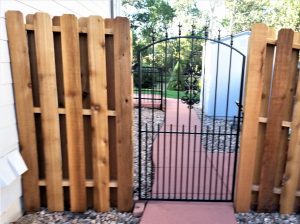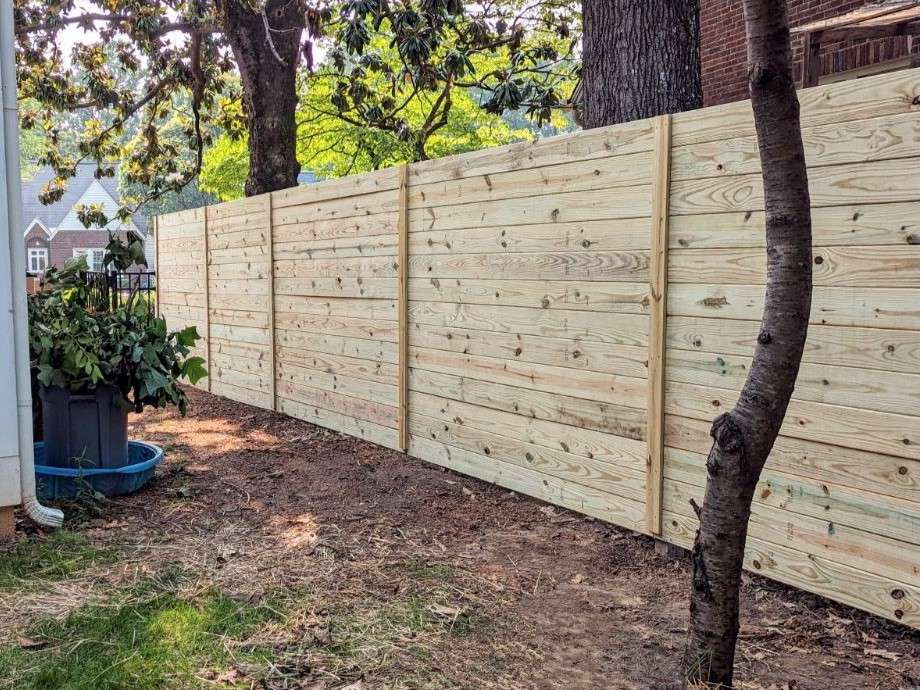Featured

Recognizing the indicators that your fencing needs to be changed can help you avoid more damages and keep the security and look of your residential property. Right here are some essential indications that it's time to change your fencing.

- Noticeable Damages or Degeneration
One of the most evident signs that your fence needs to be replaced is visible damages. Whether it's from weathering, mishaps, or insects, any kind of major cracks, splintering, or missing boards can dramatically reduce the architectural honesty of your fence. Changing the entire fencing might be much more cost-efficient in the long run. if the damage is comprehensive and goes beyond just a few repair work.
- Leaning or Sagging
A sagging or leaning fence is a clear indicator of an issue. With time, the posts and rails can move due to dampness, decaying, or poor installation. If your fence is no more standing straight or leaning at an angle, it's a great indicator that the foundation is compromised, which may call for a full substitute. Also if the fence appears to be leaning slightly, it could be a sign of underlying structural issues that might get worse with time.
- Worn Out or decaying Wood

Wooden fencings are especially vulnerable to rot and decay, especially in locations that experience high degrees of wetness or humidity. If you notice that parts of your wood fence are soft, tarnished, or have visible mold, these are all indicators of rot. Left unattended, deteriorating wood can lead to a weak fencing that may at some point collapse. In some instances, areas can be changed, but if the damages is widespread, a full substitute may be needed.
- Corrosion and Rust (For Steel Fencings)
If you have a metal deterioration, fencing and corrosion prevail indications of deterioration. Over time, exposure to moisture, rainfall, and snow can create steel fences to create rust places, which can damage the structure and spread out. While small rusting can in some cases be repaired, extensive rusting or rust may make the fence dangerous and require a complete replacement. It may be time to consider replacing your steel fencing. if you notice any considerable weakening or large locations of rust.
- Fence No More Fulfills Your Needs
An additional reason to change your fencing can be that it no much longer offers its desired purpose. In time, your demands may alter-- perhaps you need a greater fencing for more personal privacy or a more powerful one for boosted protection. If your fence no more fulfills your demands or doesn't straighten with your current preferences, it may be time to upgrade to a new, more functional style.
- Fading and Staining
While fading and staining are normally aesthetic concerns, they can still indicate that your fencing is aging. Direct exposure to UV rays and rough weather can trigger fences to lose their initial shade, making them look dull and worn. If the fading is considerable and you've already attempted cleansing and staining the fence, it could be time to change it to restore the appearance of your building.
- Frequent Repair Services
If you locate yourself regularly fixing your fence, maybe an indicator that the fence is nearing the end of its life expectancy. While minor repair work can extend the life of a fencing, frequent repairs may suggest that the framework is no much longer steady. In this situation, it might be more cost-effective to replace the entire fence instead of proceeding to purchase repair services.
Final Thought
Replacing a fencing is a significant investment, however it is crucial for preserving the visual, security, and personal privacy charm of your residential or commercial property. If your fencing is showing signs of damages, rot, leaning, or various other architectural concerns, it's essential to examine whether a replacement is necessary. By identifying these indication early on, you can make enlightened choices about when to replace your fencing, ensuring your residential property continues to be safe and visually appealing for years to come.
Latest Posts
Experience You Can Depend On with Bathroom Fitter City Detroit
Published May 03, 25
1 min read
Looking for the Best Mechanic Close By? Trust Car-X St. Louis for Your Vehicle Maintenance
Published May 03, 25
1 min read
Searching for Full-Service Vehicle Service Near Me? Car-X St. Louis Offers Convenience and Convenience
Published May 03, 25
1 min read
More
Latest Posts
Experience You Can Depend On with Bathroom Fitter City Detroit
Published May 03, 25
1 min read
Looking for the Best Mechanic Close By? Trust Car-X St. Louis for Your Vehicle Maintenance
Published May 03, 25
1 min read
Searching for Full-Service Vehicle Service Near Me? Car-X St. Louis Offers Convenience and Convenience
Published May 03, 25
1 min read